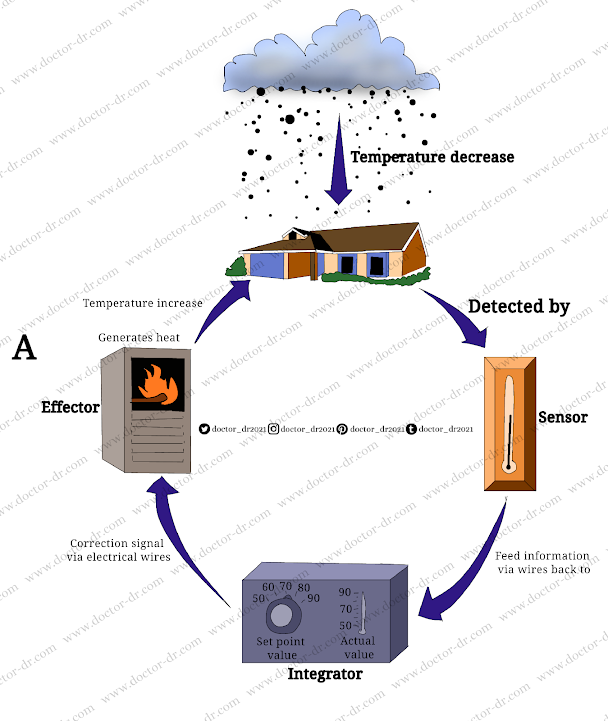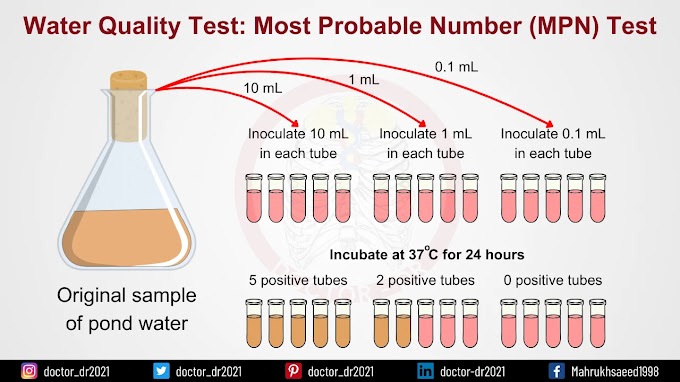HOMEOSTATIC CONTROL MECHANISMS
Maintaining homeostasis implies that the body's cells are in an environment that satisfies their demands and allows them to operate properly even when the environment changes. Homeostatic control mechanisms are devices that preserve or restore homeostasis. Almost all of the body's organs and systems are involved. If circumstances arise that need modifications or more active regulation in some element of the internal environment, the body must have control mechanisms in place to adapt to these new demands and then restore and maintain a healthy internal environment. Exercising, for example, increases the demand for oxygen and leads to the buildup of the waste product carbon dioxide.
We can maintain an appropriate blood oxygen level while simultaneously boosting carbon dioxide removal by raising our breathing rate above the norm of around 17 breaths per minute. When you stop exercising, you won't require an elevated respiratory rate, and your breathing frequency will return to normal. A highly sophisticated and integrated communication control system or network is necessary to achieve this self-regulation. A feedback control loop is the name for this sort of network. Blood carbon dioxide levels, temperature, heart rate, sleep cycles, and thirst are all controlled by different neural networks in the body.
These feedback control loops contain the same fundamental components and act in the same way regardless of the physiological function being controlled or the mode of information transfer (nerve impulse or hormone secretion).
Control Mechanisms' Basic Components There are at least three fundamental elements in
every loop of feedback control They are as follows:
1. Mechanism of the sensor
2. Control or integrating centre
3. Mechanism of action
The body must first be able to "feel" or recognise the variable being managed before the process of regulation and the idea of "return to normal" can begin. Homeostatic sensors are often specialised nerve cells or hormone-producing (endocrine) glands. To work in this manner, a specific sensor must be able to recognise the controlled element. It must also be capable of responding to deviations from the typical set point range. If the sensor detects a departure from the usual set point range, it sends a signal (nerve impulse or hormone) to the second component of the feedback system. The integration or control centre is referred to as the loop.
When the feedback loop's integration or control centre (typically a distinct region of the brain) gets input from a homeostatic sensor, it is processed and combined with data from other sensors, and then, if necessary, some specific action is taken to preserve homeostasis. First, the sensor compares the amount or magnitude of the variable being measured to the usual "set point" level that must be maintained for homeostasis.
If there is a considerable departure from that specified level, the integration/control centre will send its own specific signal to the effector mechanism, the third component of the control loop. Effectors are organs that directly impact regulated physiological variables, such as muscles or glands. It is effector action, for example, that raises or lowers body temperature, heart rate, blood pressure, or blood sugar concentration to maintain them within normal limits. The activity of effectors is ultimately governed by information about their own effects on a controlled variable, which is sent back to them.
To demonstrate how feedback control systems operate, many lecturers use the example of a heater regulated by a thermostat. This comparison works well because it resembles the homeostatic system that regulates body temperature. Changes in room temperature (the controlled variable) are sensed by a thermometer (sensor) linked to the thermostat in Figure 1-11, A. (integrator).
The furnace is controlled via a switch on the thermostat (effector). The thermometer detects a drop in room temperature caused by cold weather and relays the information to the thermostat. The thermostat does a comparison between the current room temperature and the set point temperature. After determining that the actual temperature is too low, the integrator sends a "correction" signal to the furnace by turning it on. The furnace generates heat, bringing the room temperature back to normal. When the room temperature rises over average, the thermostat receives feedback from the thermometer and turns off the furnace.
The furnace generates heat, bringing the room temperature back to normal. When the room temperature rises over average, the thermostat receives feedback from the thermometer and turns off the furnace. By turning the furnace on and off at irregular intervals, a reasonably consistent room temperature may be maintained.
FIGURE 1-11 Basic components of homeostatic control mechanisms. A, Heat regulation by furnace controlled by a thermostat.
Figure 1-11, B, demonstrates how body temperature can be controlled in a similar fashion to how the furnace system can control room temperature. Sensory receptors in the skin and blood vessels function as temperature sensors in this case. When the body temperature drops due to cold weather, feedback information is sent by nerves to the "thermostat" in the hypothalamus, a portion of the brain (hi-po-THAL-ah-mus). The hypothalamus integrator compares the current body temperature to the "built-in" set point and then sends a nerve signal to the effectors.
By shivering and therefore creating heat, the skeletal muscles function as effectors in this case. When shivering ends as a consequence of feedback information that leads the hypothalamus to turn off its stimulation of the skeletal muscles, body temperature returns to normal. In Chapter 5, we'll go through the specifics of body temperature regulation. The influence of effector activity on sensors might be either positive or negative. As a result, negative and positive feedback systems are used to classify homeostatic control mechanisms. Negative feedback loops are by far the most significant and numerous of the homeostatic regulation mechanisms.
FIGURE 1-11 Homeostatic control systems in their most basic form. B, Homeostasis of body temperature (continued). It's worth noting that in both cases, a stimulus (cold) triggers a sensor mechanism (thermostat or body temperature receptor) that provides information to an integrating or control centre (on-off switch or hypothalamus), which then sends information to an effector mechanism (furnace or contracting muscle). The heat that is produced keeps the temperature in the "normal range." The control loop is closed when the effector activity is sent back to the sensor mechanism.
Negative Feedback Control Systems
A famous example of negative feedback is temperature regulation by the operation of a thermostatically regulated furnace. Control systems with negative feedback are inhibitive. They counteract a change (such as a drop in temperature) by producing a reaction (heat generation) that is the polar opposite of the initial disturbance (fall in temperature below a normal set point). This is how all negative feedback systems in the body react, regardless of the variable under control. They cause a reaction that is the polar opposite of the alteration that triggered the system. Negative feedback control systems stabilise physiological variables, which should be emphasised.
Positive Feedback Control Systems
In control systems, positive feedback is also conceivable. Positive feedback, on the other hand, does not assist the body maintain a stable or homeostatic state, and it is frequently detrimental, if not fatal, to life. Stimulatory positive feedback control methods are used. Positive feedback, rather than resisting a change in the internal environment and producing a "return to normal," tends to magnify or reinforce the change that is taking place. A positive feedback loop, in the case of a thermostat-controlled furnace, would continue to raise the temperature.
It would do this by motivating the furnace to create increasing amounts of heat. Each increase in heat output would be accompanied by a positive stimulus that would cause the temperature to rise even higher. In most cases, such reactions cause instability and disturb equilibrium. Why? Because the variable in question would continue to vary from its expected range. Under normal circumstances, just a few examples of positive feedback are active in the body. Positive feedback accelerates the process in question in each situation. The feedback creates an ever-increasing pace of occurrences until the process is stopped. Positive feedback can occur as a result of a simple "sneeze," the birth of a child, or the development of a blood clot.
In conclusion, most homeostatic systems work on the concept of negative feedback. Changes in the environment that surrounds every bodily cell activate them, or turn them on. Negative feedback systems act as a deterrent. They undo the alteration that triggered the homeostatic process in the first place. A homeostatic process tends to preserve or restore internal consistency by reversing the original alteration. A positive (stimulatory) feedback system can occasionally aid survival. Positive or stimulatory feedback systems may be necessary to speed up the completion of particular bodily functions.
QUICK INSPECTION
1. Explain what the term "homeostasis" means.
2. Identify the three fundamental components of any feedback control system.
3. Describe the negative and positive feedback control systems' mechanisms of operation.









